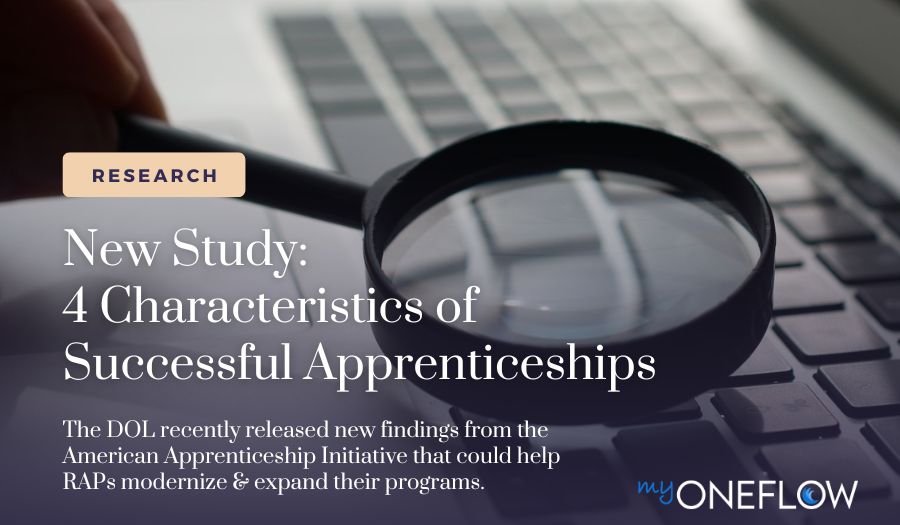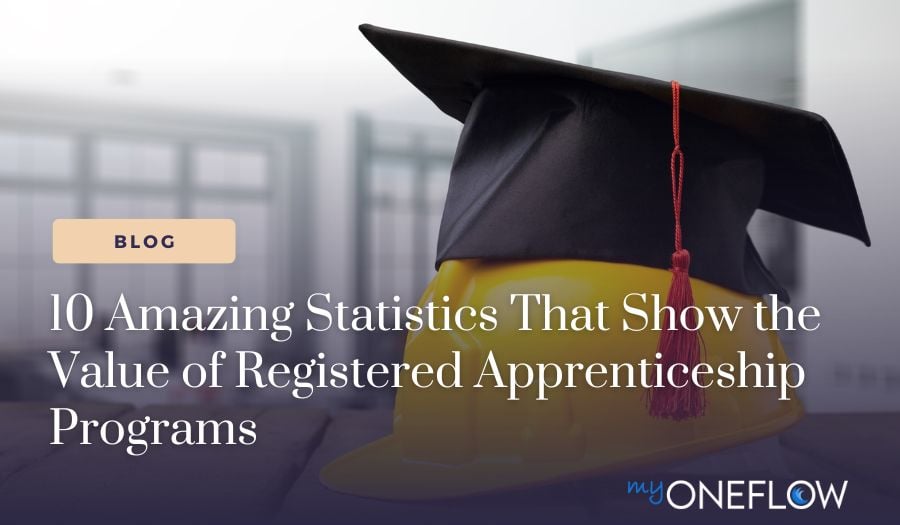How An Apprenticeship Can Help Your Business Combat the Labor Shortage
Since the pandemic, businesses have been facing an unprecedented labor shortage. As of June 2022, there were almost twice as many job openings as...
3 min read
 Emily Sleister
Nov 30, 2022 4:39:01 AM
Emily Sleister
Nov 30, 2022 4:39:01 AM

The Department of Labor (DOL) released new research on the effectiveness of Registered Apprenticeship Programs (RAPs). The research was gathered from the American Apprenticeship Initiative (AAI), an ETA grant-funded program that awarded $175 million to 46 organizations from 2015 to 2020. The grantees included postsecondary educational institutions, state and local agencies, labor unions, and workforce boards. The goal of AAI was to expand RAPs into new, high-growth, high-tech industries, with an emphasis on recruiting apprentices from traditionally underrepresented populations, such as women, racial and ethnic minorities, and veterans.
The ETA was interested in measuring RAP benefits for apprentices and employers and identifying key characteristics of the most successful programs. They commissioned the National Governors Association (NGA) to conduct a series of studies to evaluate AAI. 40 grantees set target goals for the proportion of apprentices served from underrepresented populations – 31 of those grantees met or exceeded their goal. In all, the AAI grantees registered over 24,600 apprentices, of which almost 60% were from underrepresented populations.
The NGA evaluated the 13 top-performing grantees through data analysis, interviews, site visits, and cohort discussions. Through their research, they identified four key components shared by the programs of successful AAI grantees: simplified processes, partnerships, flexibility, and sustainability.
One of AAI’s main goals was to expand RAPs into new industry sectors. This meant that many grantees were working with employers who had never participated in an apprenticeship program before and thus weren’t familiar with many of the logistical aspects. Successful grantees worked to simplify and streamline processes, including registration, compliance, and apprentice tracking. Reducing paperwork helped alleviate the administrative burden so employers and other stakeholders could focus more on the quality of the program and apprentice outcomes. Some grantees used apprenticeship intermediaries to serve as a liaison between employers and apprenticeship sponsors. These intermediaries managed the logistical aspects of the program by assisting employers with registration, reporting, and apprentice tracking.
The report's authors put it plainly: “It is unlikely that a single entity can take all the steps necessary to build and sustain a successful RAP on its own.” Successful grantees formed strong partnerships among multiple stakeholders, including employers, workforce development organizations, educational institutions, and community-based organizations (CBOs). Each stakeholder supported a healthy apprenticeship ecosystem by bringing unique perspectives, resources, and funding streams. Collaborating with CBOs such as charities, youth organizations, and housing authorities helped grantees reach underrepresented populations in their communities. Partnerships with educational institutions helped provide the academic framework and resources to support apprentices obtaining high-quality RTI. Regardless of the partnership, successful grantees intentionally divided roles, set expectations, and prioritized consistent, ongoing communication through webinars or meetings.
The AAI grantees weathered some significant changes over the five years of grant funding, including the COVID-19 pandemic. Successful grantees remained flexible on both the program level and the apprentice level. They used feedback loops to gather information and were conscious of the changing needs of employers, apprentices, and the labor market. Using labor market information (LMI) helped inform industry needs in grantees’ local communities, enabling them to create targeted programs that addressed a specific need in the workforce. Successful grantees also maintained flexibility around the needs of apprentices and adjusted their programs accordingly. For some grantees, this meant using interpreters, adding additional accessibility features, texting apprentices, and helping with paperwork.
Successful grantees were strategic about their long-term vision and built programs that were sustainable beyond the AAI funding. Their programs were closely aligned with their organization’s mission, ensuring relevancy in the long run. They recognized that their program couldn’t survive on a single funding stream, so they were intentional about weaving together multiple funding sources and resources. They stayed engaged with employers to maintain a strong and consistent line of communication about the program. They were actively inclusive by participating in strategic outreach to diverse populations in their communities, and they consistently followed up with apprentices after program completion to gauge outcomes.
The title of the NGA’s report is “Registered Apprenticeship Reimagined,” and their findings serve as a call to action. Modernizing apprenticeships requires expansion into new industries and underserved populations. New and existing RAPs can use the AAI grantees as inspiration and examples of best practices as they adjust their programs to meet the needs of today’s workforce and labor market. To start a discussion about expanding the impact of your apprenticeship program, contact our team today.

Since the pandemic, businesses have been facing an unprecedented labor shortage. As of June 2022, there were almost twice as many job openings as...

Happy National Apprenticeship Week! This important event serves as a yearly reminder of the vital role apprenticeships play in strengthening our...
.jpg)
Apprenticeships provide an excellent opportunity for employers and job seekers to build long-term, mutually beneficial relationships. By combining...